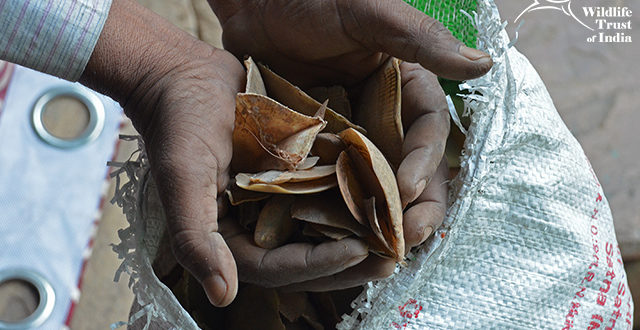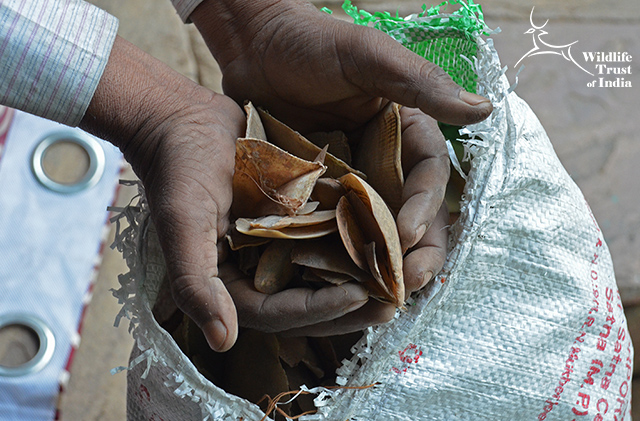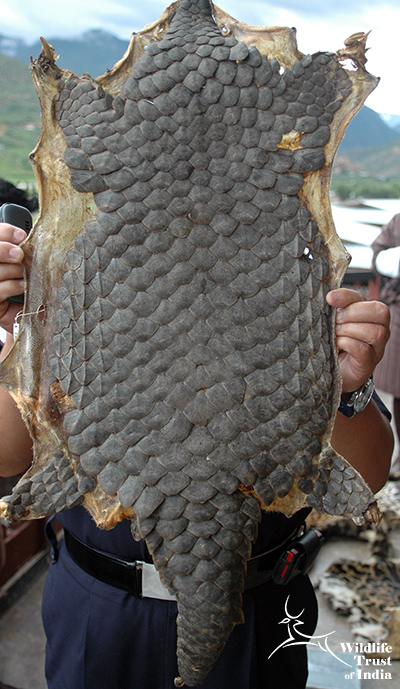CITES Update: Big Win for Pangolins at CITES with Near-unanimous Vote for Total Trade Ban
Johannesburg, South Africa, September 29, 2016: A vote yesterday afternoon at the 17th Conference of the Parties (CoP 17) of the Convention on International Trade in Endangered Species (CITES) decided that the most illegally traded mammal in the world urgently needs protection from further over-exploitation. All eight pangolin species are being transferred from Appendix II to Appendix I – thus prohibiting any international commercial trade in pangolin parts.
Two separate proposals were tabled yesterday, for the Asian and the African pangolin species. The Asian proposal was introduced by India with the up-listing of two species, the Indian Pangolin (Manis crassicaudata) and Philippine Pangolin (Manis culionensis) to Appendix I being accepted by all parties. Indonesia, however, raised opposition to the listing of the Sunda Pangolin (Manis javanica) and Chinese Pangolin (Manis pentadactyla) in Appendix I, whereupon a vote was called for. There were 114 votes cast in favour of the proposal, five abstentions (including China and Japan), and just Indonesia’s vote against. The up-listing of the four pangolin species from Africa received unanimous support.
“Better late than never!” said Dr MK Ranjitsinh, Chairman Emeritus of Wildlife Trust of India (WTI), who had lobbied on behalf of Asian pangolin species as chairperson of the CITES Standing Committee in the 1980s. “But CITES is not enough. Illegal trade in pangolin parts must now be considered on par with rhino horn by enforcement authorities and NGOs..”, adding that the extent of illegal trade in pangolins can drive them to extinction in India.
Pangolins are small to medium size, scale-covered mammals found throughout parts of Asia and Africa. There are a total of eight species, four in Asia – of which the Indian Pangolin and the Chinese Pangolin are found in India – and four in Africa. They are particularly sensitive to over-exploitation because their reproduction rate is very low. Furthermore, their primary predator defence of rolling into an impenetrable ball makes them an easy catch for poachers.
Pangolin scales are used in traditional Asian medicine and their meat is a highly valued delicacy. Over a million pangolins have been taken from the wild and illegally traded in the past decade. As populations have dwindled in China and Vietnam, poachers have turned to other parts of Southeast Asia and India, and are increasingly sourcing animals from the African species.
All pangolin species have been on Appendix II of CITES since 1994. Pangolins are also protected by national laws in most range countries but lack of enforcement and light penalties have undermined these laws in many nations. The IUCN Red List of Threatened Species lists the two species found in India, the Indian and Chinese Pangolins, as ‘Endangered’ and ‘Critically Endangered’ respectively.
WTI has initiated both direct and indirect interventions to break the pangolin trade chain in India. Direct engagements have included covert operations such as Operation Shield – I, conducted in December 2015 in Gwalior, wherein WTI helped the Madhya Pradesh Forest Department and Wildlife Crime Control Bureau seize 27.5kg of pangolin scales and apprehend two members of a major pangolin trade racket.
Earlier in 2015, WTI had also initiated a comprehensive study to better understand the pangolin trade in India. The study revealed that the trade engaged a diverse range of actors, including rural harvesters, professional hunters and a wide variety of intermediate traders, wholesalers and retailers, up to the final consumers of pangolin parts – many of whom lived thousands of miles away. The price of pangolins varied sharply depending upon size and species, with Indian Pangolins fetching a lot more than Chinese Pangolins in some places. The price paid for live pangolins also varied startlingly, with a high ranking poacher commanding as much as forty times the price that a local villager would get for the same animal.
Most of those involved in the trade were unaware of why the pangolin was being hunted. Some thought the animal was a symbol of good luck while others believed the meat was used to cure various chronic diseases. Scales were also being used in different types of ornaments and musical instruments.











